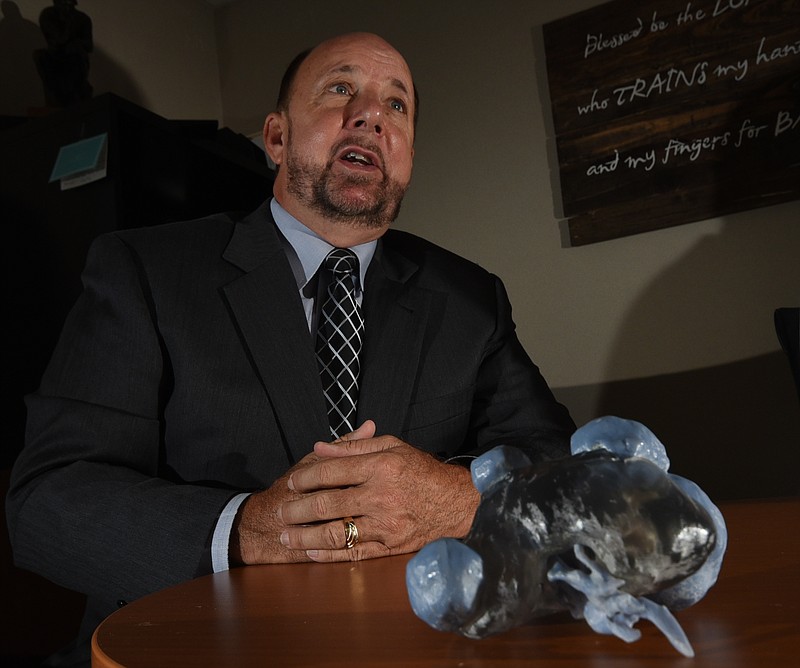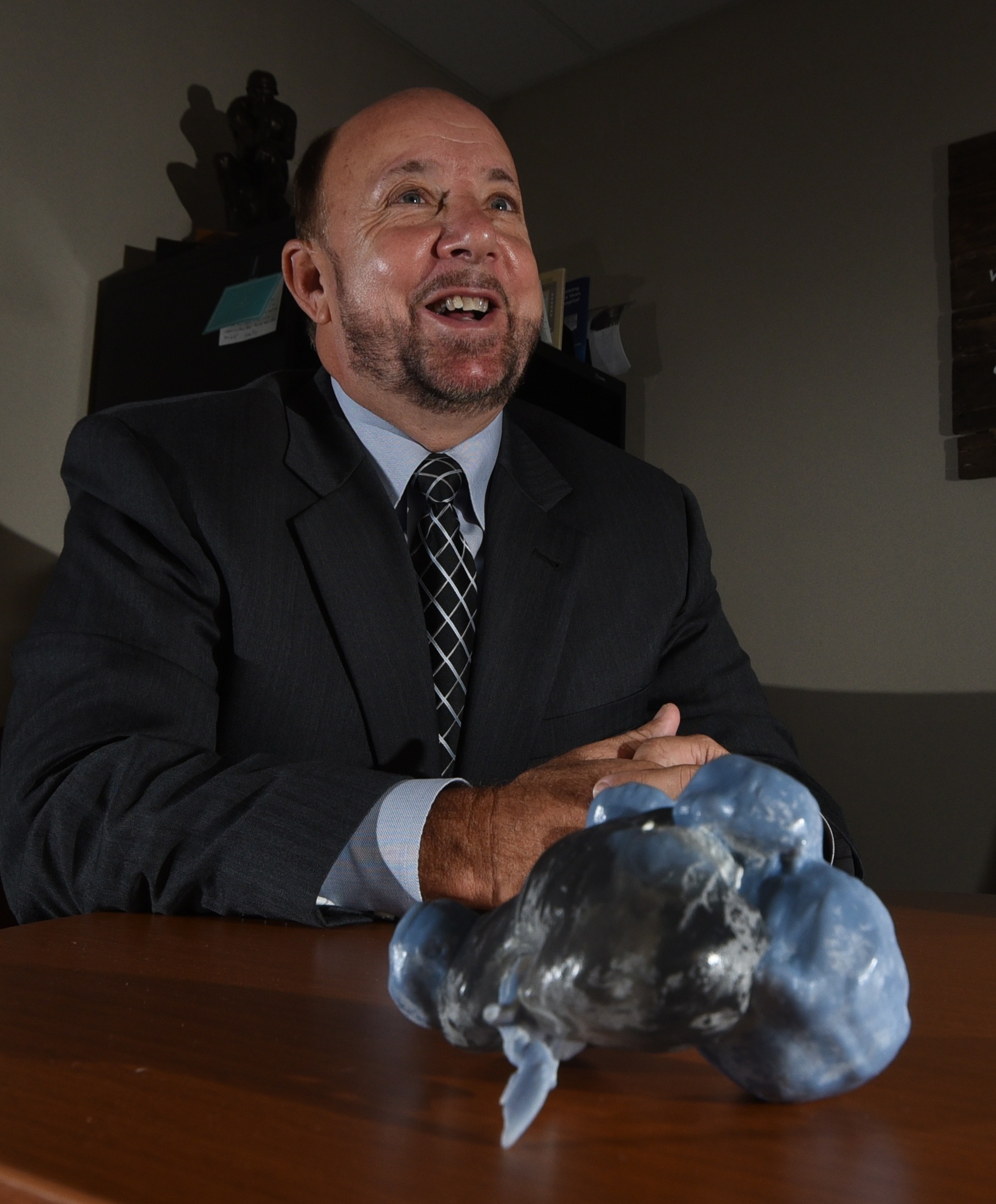Keith Campbell says he was in the Chattanooga public library during a session of Maker Faire in 2014 when he first realized he might be on to something.
He was standing with Dr. David Seaberg, dean of UT's Health Science Center here, looking at models produced by a 3D printer, when Dr. Seaberg noted that the medical center had plenty of models of healthy organs. But what they needed were models of unhealthy organs. "We have all sorts of models of what is right," Campbell remembers Seaberg saying. "But what we don't have is models of what is wrong." That got Campbell to thinking. What if he could combine 3D printers with a hospital's CT scanners or MRI machines and produce models of a patient's diseased organs? What value might that have to patients, surgeons or medical students?
About a year later, Campbell thinks he has his answer. An Erlanger surgeon recently completed his first surgery using 3D Ops' model of a patient's tumor-ridden kidney to help prep for surgery. And 3D Ops signed a contract with Erlanger in October for a pilot program to explore the use of 3D models at the hospital.
Dr. Blaise Baxter, head of Erlanger's imaging department, believes providing surgeons with a 3D model of their patients will allow them to better prepare for surgery. "It helps to minimize the risk to patients," Baxter says. "It makes for shorter procedures and there is not as much real-time exploration that has to be done."
Dr. Chris Keel, who was the first surgeon at Erlanger to use the 3D models, agrees. Keel's patient had several large tumors wrapped around his kidney, and while he said he could have done the operation without the model, having it gave him a better view of where the arteries were in relation to the tumor.
3D Ops has patents for software to connect hospital scanners with 3D printers, and Campbell's company has a plan to build a network of regional offices to provide modeling services to hospitals across the U.S. That's an ambitious goal for a company that currently consists of only three employees - Campbell, CEO/CTO Daniel Hampton, and marketing chief Beth Douglass, plus 20-odd freelance contractors.
Campbell didn't start out as an entrepreneur. He worked for IBM for years during the mainframe era, working at the Johnson Space Center at NASA, and then at Texaco. He "retired" from IBM to move back to Chattanooga and worked with a company installing fiber optic lines for high-speed Internet access. He first became involved with 3D printers in the manufacturing field, where they are often used for prototyping.
3D printing has been around since the 1980s, but it has only been in recent years that the cost, speed and range of materials that can be used for printing have all improved to the point that it is becoming a mainstream tool for custom applications. The basic operation is simple: a print head repeatedly moves back and forth in two dimensions across a space, spraying a liquid that builds up layers with each pass to form a 3D object. Combined with a 3D modeling program on a computer, the printer can create complex shapes, and those shapes can be altered easily to create custom designs.
NASA is exploring whether a 3D printer makes sense on a deep space mission to Mars, for example, so that astronauts could print out a new piece of equipment if an existing one failed. At the same time, consumer-level models are finding uses for fancy cake decorations or complex jewelry designs.
The expensive MRIs and CT scanners used by hospitals are not designed for 3D work, generally producing a series of 2-dimensional images that can be stitched together on a computer to provide 3D images of the body. 3D Ops has patents on software that takes those computer models and transforms them into a format usable by 3D printers, Campbell said.
A critical step in 3D Ops' business plan is working with Erlanger's Imaging department to tweak that software and the way the imaging is done to maximize its usefulness for 3D printing. Erlanger's Baxter hopes to develop default settings, or protocols, for different machines and different procedures. "No one has done that," he says. "We could make a major contribution, saying here are the best ways to acquire that data for that imaging that is going to be given as a source material for these 3D models."
Campbell concedes that some of the nation's 400 teaching hospitals, such as Erlanger, may end up purchasing their own 3D printers, primarily for teaching purposes.
But that leaves more than 5,000 hospitals in the U.S. that are not teaching hospitals. 3D printing is expensive - the machine used to produce the kidney for Dr. Keel cost about $250,000 - and both the gear and the software to run it changes rapidly, often several times in a year. That's where Campbell sees an opportunity to offer a service that the hospitals would be unable to provide themselves.
3D Ops hopes to begin building out its network in the next few months, and his five-year target is 300-plus hospitals, organized in networks of about a dozen hospitals each.
Each hospital would pay what Campbell calls a low monthly subscription fee, plus an average of about $400 per model, depending on its complexity and the materials used.
And Campbell is already looking at further uses of 3D printing. Once the surgeon has a 3D model showing exactly where he or she is going to be operating, why not customize the tools they will need for that particular operation. "What about custom tools for that particular patient?" Campbell asks.

